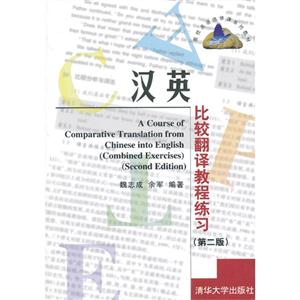
作者:陈洁 主编 陈洁,廖海宏
页数:241
出版社:清华大学出版社
出版日期:2022
ISBN:9787302613138
电子书格式:pdf/epub/txt
内容简介
《职场英语写作》内容涉及简历、求职信、商业信件、备忘录、邮件、会议议程与纪要、执行摘要、提案报告、调查报告、口头汇报、网页设计与写作等十余种在各行业中使用频率较高、要求严格、覆盖面广的体裁形式。编者遵照讲授知识、训练能力、内化素质、推动实践的构思,组织素材和优化内容,旨在帮助读者获得当代企事业管理、商业运作和现代办公所需的英语交流与写作技能,增强职业素养,提升职场竞争力。
作者简介
陈洁,出生于1971年1月,中南大学外国语学院副院长,英语系副教授,硕士研究生导师。2016年2月至2017年2月,获CSC资助访学英国。研究方向为应用语言学、语言哲学和外语教育技术。近些年,致力于课程改革与建设,多次获得校级、省级立项资助。作为课程负责人与主讲教师,建设且成功上线慕课Practical English Writing,并主编出版同名教材。
本书特色
本教材共八章,包括 Introduction、Language Techniques for Effective Writing、Document Design、Writing for Job Opportunities、Basic Correspondence、Reports、Writing for the Oral Presentation 和 Writing for the Web。在讲授英语写作基础知识和电脑写作技术的同时,编者将敏锐的触角延伸到包括简历、求职信、商业信件、备忘录、邮件、会议议程与纪要、执行摘要、提案报告、调查报告、口头汇报、网页设计与写作等十余种在各行业中使用频率较高、要求严格、覆盖面广的体裁形式。每章均有配套练习,由编者精心编写和反复打磨而成,供读者检验学习效果,提高实战能力。
目录
Chapter 1 Introduction.1
1.1 The Value of Effective Writing at Work.2
1.2 Characteristics of Work-related Writing. 5
1.3 Phases of Writing.8
Chapter 2 Language Techniques for Effective Writing 15
2.1 You-attitude 16
2.2 Seven Cs.20
2.3 Active Voice Versus Passive Voice. 35
2.4 Positive and Unbiased Tones 36
2.5 Punctuation40
Chapter 3 Document Design49
3.1 The Importance of Good Document Design50
3.2 Choosing Typefaces Carefully 51
3.3 Using “Chunking” to Communicate 54
3.4 Creating Good Headings 55
3.5 Using a Good Layout for Columns and Lists58
3.6 Using Block Paragraphing and White Space Effectively. 63
3.7 Incorporating Visuals66
Chapter 4 Writing for Job Opportunities.73
4.1 Highlighting Reader-centered Communication 74
4.2 Marketing Yourself as a Job Seeker 77
4.3 Résumés80
4.4 Cover Letters96
Chapter 5 Basic Correspondence. 105
5.1 Writing Persuasive Messages. 106
5.2 Conveying Good News, Neutral News, and Bad News.110
5.3 Business Letters.114
5.4 Memos 128
5.5 Emails141
Chapter 6 Reports. 153
6.1 Report Types154
6.2 Report Components156
6.3 Procedures of Creating Reports159
6.4 Meeting Minutes and Agendas 168
6.5 Executive Summaries.173
6.6 Proposal Reports176
6.7 Surveys. 183
Chapter 7 Writing for the Oral Presentation. 187
7.1 Understanding the Oral Presentation as a Way of Communication188
7.2 Preparing an Audience-targeted Oral Presentation 192
7.3 Making an Audience-targeted Oral Presentation205
Chapter 8 Writing for the Web. 211
8.1 Differences Between a Web Page and a Website 212
8.2 Major Types of Websites Used in the Workplace. 214
8.3 Processes of Creating Reader-centered Web Pages223
8.4 Skills in Developing Content-based Web Pages.225
References 231
Keys to Exercises233














